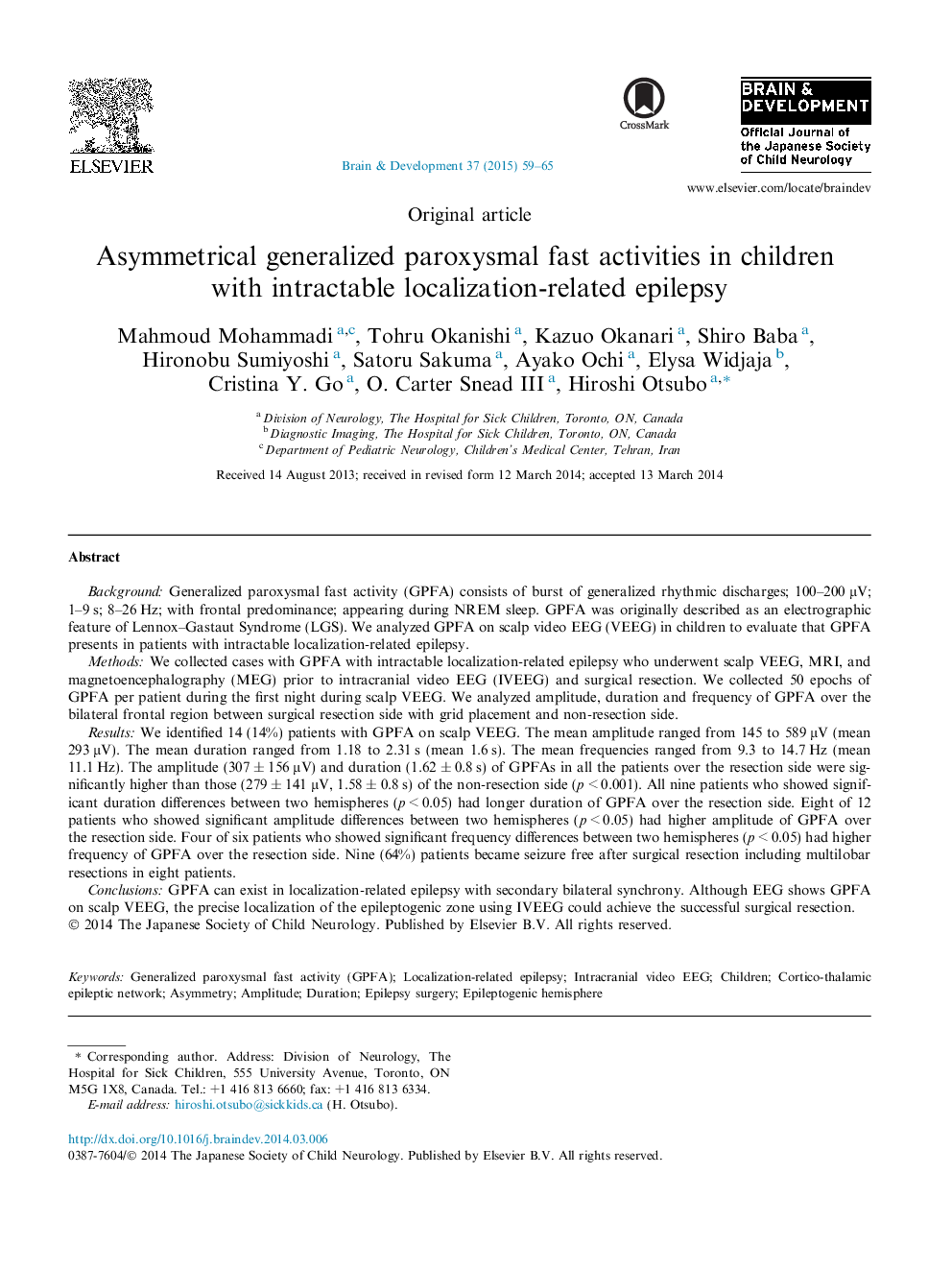| Article ID | Journal | Published Year | Pages | File Type |
|---|---|---|---|---|
| 3036682 | Brain and Development | 2015 | 7 Pages |
BackgroundGeneralized paroxysmal fast activity (GPFA) consists of burst of generalized rhythmic discharges; 100–200 μV; 1–9 s; 8–26 Hz; with frontal predominance; appearing during NREM sleep. GPFA was originally described as an electrographic feature of Lennox–Gastaut Syndrome (LGS). We analyzed GPFA on scalp video EEG (VEEG) in children to evaluate that GPFA presents in patients with intractable localization-related epilepsy.MethodsWe collected cases with GPFA with intractable localization-related epilepsy who underwent scalp VEEG, MRI, and magnetoencephalography (MEG) prior to intracranial video EEG (IVEEG) and surgical resection. We collected 50 epochs of GPFA per patient during the first night during scalp VEEG. We analyzed amplitude, duration and frequency of GPFA over the bilateral frontal region between surgical resection side with grid placement and non-resection side.ResultsWe identified 14 (14%) patients with GPFA on scalp VEEG. The mean amplitude ranged from 145 to 589 μV (mean 293 μV). The mean duration ranged from 1.18 to 2.31 s (mean 1.6 s). The mean frequencies ranged from 9.3 to 14.7 Hz (mean 11.1 Hz). The amplitude (307 ± 156 μV) and duration (1.62 ± 0.8 s) of GPFAs in all the patients over the resection side were significantly higher than those (279 ± 141 μV, 1.58 ± 0.8 s) of the non-resection side (p < 0.001). All nine patients who showed significant duration differences between two hemispheres (p < 0.05) had longer duration of GPFA over the resection side. Eight of 12 patients who showed significant amplitude differences between two hemispheres (p < 0.05) had higher amplitude of GPFA over the resection side. Four of six patients who showed significant frequency differences between two hemispheres (p < 0.05) had higher frequency of GPFA over the resection side. Nine (64%) patients became seizure free after surgical resection including multilobar resections in eight patients.ConclusionsGPFA can exist in localization-related epilepsy with secondary bilateral synchrony. Although EEG shows GPFA on scalp VEEG, the precise localization of the epileptogenic zone using IVEEG could achieve the successful surgical resection.
